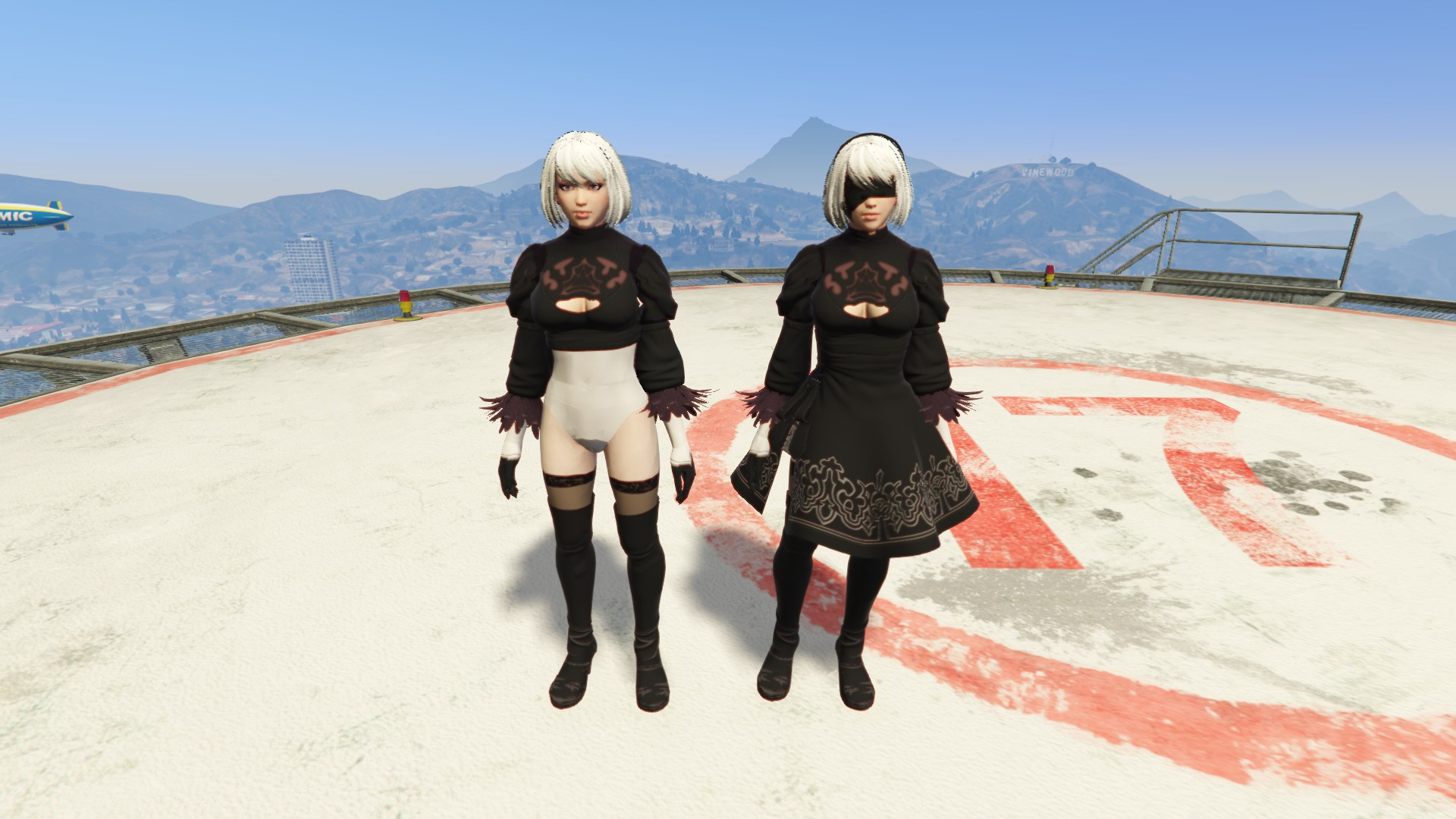
There are only peacemakers and warbringers. Kijima makes it clear - there is no moral superiority here. Reexamining NieR: Automata’s first main boss, Engels, you can see that this terrifying monster of machinery is actually just one large construction site.Īs Kijima put it, “he uses cranes to lift up his own arms - he’s construction equipment, and what he’s building is himself.” He is like any other machine wandering war-torn earth, seeking safety from harm and the right to self-determine. The player gradually gains an understanding that seemingly subservient machine lifeforms are actually capable of identity and self-determinism.
#Nier automata 2b dance full
When the game forces us to cast aside these ideas, we finally achieve a full view of NieR: Automata’s cast. When we decide that those traits have a face, a look, a style, we decide which lifeforms deserve empathy, which lifeforms are prone to violence, and which simply use it as a means to an end.

The ultimate message of NieR: Automata’s character design is that our own preconceived notions of beauty, intellect, and morality get in the way of our sight. And at the top of this pyramid is the commander, who wears neither blindfold nor veil, all-seeing and all-knowing. They can see the bigger picture, but they are physically barred from revealing it. Yet instead of a blindfold, the operators wear face veils. The operators send and moderate information distributed to the ground units.
#Nier automata 2b dance android
These small but philosophically loaded visual details are a critical part of every android design, spanning their social hierarchy. This tunnel vision carries over to the eyes of the player, who is shackled by 2B’s limited perspective of the war. Black and white vision, good versus evil. With her compatriots, she shares blindness, an inability to see the greater picture. This is an accessory she shares with all of her fellow ground units, the grunts of the android resistance. Examining the design of 2B, our android protagonist, the eye is quickly drawn to her most distinguishing trait ― her black blindfold. The androids too feature deviant design choices. Simone is not the only machine whose design subverts expectations in NieR: Automata. In a race without gender, she is proudly feminine, crying out in mourning as a spurned lover. She is wholly an individual, albeit crying and vengeful. She wears a voluminous red dress and bellows in opera as she slashes at the player. She has a feminine face made of an iron helmet, a perfectly symmetrical crown adorned with the hanging bodies of two androids. She is the cherry on top of this amusement park level, equal parts horrifying and pitiful, and a notable deviation physically from the usual machine lifeform.

One of the game’s most striking bosses is Simone, a mechanical caricature of Simone de Beauvoir, an existentialist philosopher. You see your enemies walk around in their usual, uniform stupor, but instead of blankly looking for an android unit to kill, they are falling in step to a dance recital. The machine lifeforms are still equipped with machine guns, but those machine guns are furiously shooting confetti, not bullets. The protagonist is extremely skeptical of their nonviolence and is asked many times by her companion to get rid of them, just in case they return to their barbaric nature. The player’s first exposure to this idea occurs when she comes upon an amusement park populated by non-violent machine lifeforms. Director Yoko Taro’s demands informed this minimalist design he insisted that the machines’ bodies should not bend on more than two axes. The alien-bred machine lifeforms are sturdy, simple structures with few joints and thin, mechanical limbs. The two mecha races fight a proxy war on their creators’ behalves, duking it out on a blighted Earth.

The androids were created by the human race to fight the aliens the machine lifeforms were created by the aliens to fight the human race. They are split up into two defined categories: the androids and the machine lifeforms. The secret to its execution lies in the character design.įor the unacquainted, a brief summary― NieR is a game about machines. Sure, the story seems like typical good versus evil and war between humanistic androids and alien machines, but the game swiftly subverts all expectations.

The magic of NieR, however, is that these figures aren’t killing machines at all. He can never really die, because his organs become the heart and lungs of the next killing machine. When pictured as individual pieces, as strewn together parts, they create a menacing image: a machine designed for combat. These are the blood and guts of NieR: Automata’s mechanical lifeforms. Sockets that can pop in and out advanced weaponry, oversized guns, and titanium katanas.


 0 kommentar(er)
0 kommentar(er)
